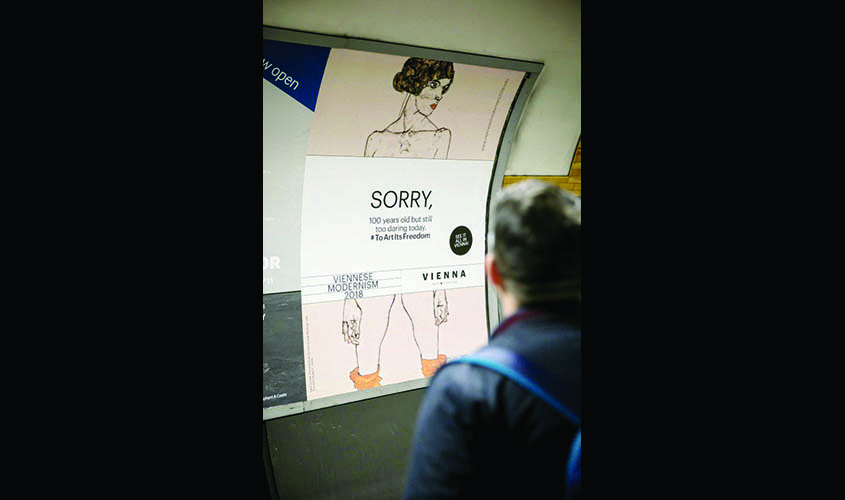The Royal Academy of Arts in Picadilly has a unique position of being an independent, privately funded institution led by eminent artists and architects whose purpose is to be a clear, strong voice for art and artists and to encourage debate. 2018 is the centenary of Gustav Klimt’s and Egon Schiele’s death, two of the most famous artists of the fin-de-siecle period. Klimt made his name painting the interiors of the historicist buildings of Vienna’s Ringstrasse, such as the newly built Burg theater and subsequently his glittering “Golden Phase” of ornamented women with his use of gold leaf. Klimt was an avant-garde artist who broke with tradition to establish the Secession movement, whose purpose was to provide young and unconventional artists with a platform to show their work and a venue where French Expressionists could be exhibited; Viennese society had previously not been exposed to modern art. Klimt loved women and painting, as demonstrated by his rich legacy of artworks.
Schiele was twenty-eight years younger than Klimt but recognised as an exceptional talent, his teachers were so impressed they advised the 16-year-old Schiele to enter the Akademie der Bildenden Künste (Academy of Fine Arts)in 1906. Schiele was in the vanguard of Austrian Expressionism, he was an extraordinary draftsman, his graphic and distorted style eroticised the male and female nudes he painted. Klimt befriended and artistically mentored Schiele, while their styles differed they both pushed the boundaries of their time in drawing; by the time of Klimt’s death in February 1918, Schiele was widely acknowledged as his successor.
The first documented meeting between them took place in November 1910 and this led to an exchange of drawings and visits to each other’s studios. Both artists intimately explored the psyche and sexuality of their sitters in their individual ways, the human figure drawn through line is at the heart of the exhibition.
The Royal Academy exhibition comprises around 100 unique works on paper by both artists, including rare studies for allegorical paintings, portraits and self-portraits, landscapes, erotic nudes and a sketchbook, lithographs, photographs and original publications. These are rarely loaned works drawn from the exceptional holdings of the Albertina Museum in Vienna, due to their sensitivity to light they will not be displayed again for many years.
The exhibition beginning on November 4th, will be arranged thematically in five sections examining Klimt’s and Schiele’s often divergent, yet sometimes compellingly parallel, processes and graphic styles. It will reveal the ways in which these two artists experimented with the discipline of drawing from life, particularly in their provocative depictions of the human body in allegories, portraits and erotic nudes.
The Royal Academy were obliged to comply with Transport for London’s censorial regulations, a direction that comes under the Mayor of London’s offices, that posters advertising the London exhibition had the private parts of nude studies covered up. The banner over the offending parts reads “SORRY- 100 years old but still too daring for today”.

